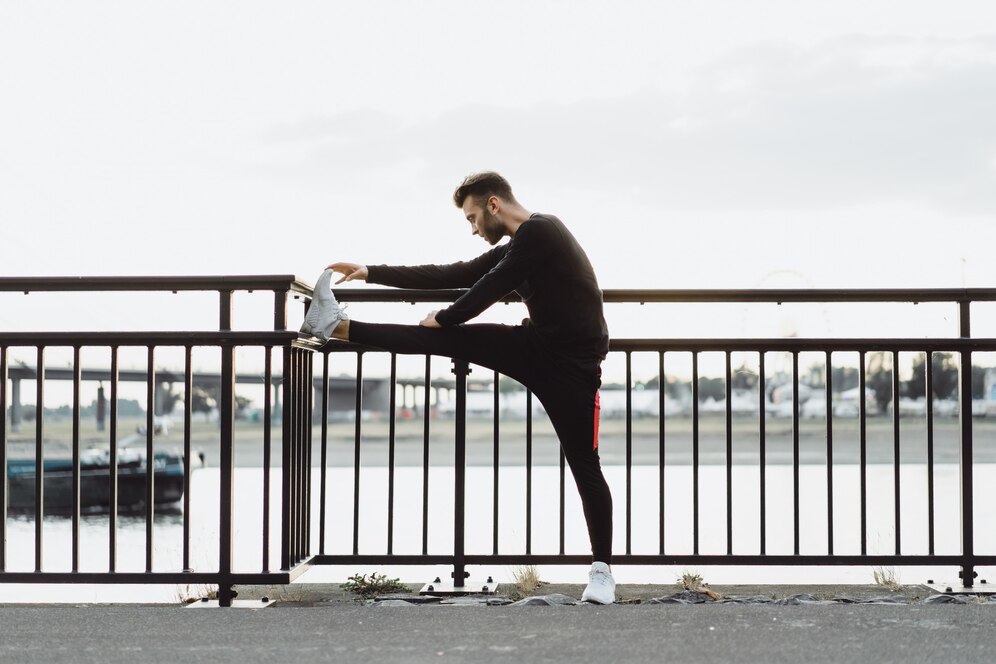
Dynamic Stretching for Improved Performance
When it comes to preparing your body for physical activity, how you warm up matters; gone are the days when a static toe touch was considered enough. Today, fitness professionals, athletes, and everyday exercisers alike are embracing dynamic stretching—a more active, movement-based approach to improving mobility and boosting performance.
Dynamic stretching not only helps with flexibility but also supports functional training by preparing your body in a way that mimics real movement. Whether you’re gearing up for a strength workout, a run, or a competitive sport, this technique can make a noticeable difference in how your body feels and performs.
What Is Dynamic Stretching?
Dynamic stretching involves controlled, full-range movements that actively take your joints and muscles through a natural range of motion. Unlike static stretching—which requires holding a position—dynamic movements are more fluid and often resemble the activity you’re about to perform.
Key features of dynamic stretching:
- Involves movement, not holding poses
- Warms up the muscles and increases the heart rate
- Activates the nervous system and prepares joints
- Mimics sport- or activity-specific movements
It’s a key part of warm-up routines across many types of functional training, from gym sessions to team sports to martial arts.

Benefits of Dynamic Stretching
1. Improves Flexibility Over Time
By repeatedly moving through your range of motion, dynamic stretching encourages the muscles and joints to loosen up—building mobility while maintaining strength and control.
2. Prepare the Body for Exercise
Dynamic movements raise your heart rate, warm up your muscles, and activate your nervous system—making you more alert and physically ready.
3. Supports Functional Movement
Because dynamic stretches often mimic real-life or sport-specific actions, they improve the coordination and mobility needed for functional training routines.
4. Reduces Risk of Injury
Warming up dynamically increases blood flow and elasticity in your muscles and tendons. This makes your body more resilient to sudden movement and reduces your chance of strain.
5. Enhances Performance
Studies show that dynamic warm-ups improve power, speed, and agility in the short term—making them especially useful before strength, sprint, or sport-based sessions.
Dynamic vs. Static Stretching: When to Use Each
| Type | Dynamic Stretching | Static Stretching |
| Involves movement? | Yes | No (held position) |
| Best used | Before a workout | After a workout |
| Purpose | Warm up, and activate muscles | Cool down, relax your muscles |
| Improves | Mobility, circulation, readiness | Flexibility, recovery |
While dynamic stretching is best before exercise, static stretching is ideal for cooling down and improving long-term flexibility. Each has a place in a balanced routine.
Common Dynamic Stretching Movements
You don’t need a lot of space or equipment to benefit from dynamic stretches. Here are some of the most effective movements to add to your routine:
1. Leg Swings
Targets: Hamstrings, hips, glutes How to do it:
- Stand beside a wall or sturdy object for balance
- Swing one leg forward and back in a controlled arc
- Perform 10–15 swings per leg
Why it works: Prepares the hips and hamstrings for walking, running, or lower-body exercises.
2. Arm Circles
Targets: Shoulders, upper back How to do it:
- Extend your arms out to the sides
- Make small circles, gradually increasing in size
- Switch directions after 15 seconds
Why it works: Warms up the shoulder joints and increases upper-body mobility.

3. Hip Circles
Targets: Hips, lower back, core How to do it:
- Place your hands on your hips
- Slowly rotate your hips in a circular motion
- Perform 5–10 circles in each direction
Why it works: Loosens the hip joint and engages core stabilisers.
4. Lunge with a Twist
Targets: Legs, hips, core, spine How to do it:
- Step forward into a lunge
- Rotate your torso toward the front leg
- Return to standing and alternate legs
Why it works: Activates multiple muscle groups and improves spinal mobility.
5. High Knees or Butt Kicks
Targets: Quads, hamstrings, calves, cardiovascular system How to do it:
- Perform quick, alternating knee lifts or kick heels to the glutes
- Keep light on your feet and move for 30–60 seconds
Why it works: Increases heart rate and stimulates fast-twitch muscle fibres.
6. Toy Soldiers
Targets: Hamstrings, hip flexors How to do it:
- Walk forward, kicking one leg up while reaching with the opposite hand
- Keep legs straight but avoid locking your knees
- Do 10–12 reps per side
Why it works: Enhances hamstring mobility with added balance and coordination.
Sample Dynamic Warm-Up Routine (10 Minutes)
This routine is ideal before strength workouts, running, or any form of functional training.
- March in place – 1 minute
- Arm circles + shoulder rolls – 1 minute
- Leg swings (front/back and side to side) – 2 minutes
- Lunges with torso twist – 1 minute
- High knees or jogging on the spot – 1 minute
- Hip circles – 1 minute
- Butt kicks or toy soldiers – 2 minutes
- Jumping jacks (optional) – 1 minute
This mix warms up the full body and prepares the joints for movement—especially helpful before compound exercises or sports.
Dynamic Stretching for Specific Activities
For Runners
Focus on hips, hamstrings, and calves. Include:
- Leg swings
- Walking lunges
- Calf pumps
- High knees
For Lifters
Prioritise joints and muscles involved in your lifts. Include:
- Shoulder rolls
- Hip openers
- Bodyweight squats
- Arm swings and thoracic rotations
For Athletes or Functional Training
Use sport-specific drills:
- Lateral shuffles
- Dynamic lunges
- Skips or bounding drills
- Agility footwork drills
Tailoring your dynamic warm-up to your activity will give the best results.
Mistakes to Avoid
While dynamic stretching is simple, there are a few things to watch out for:
- Going too fast: Controlled movement is key—don’t rush
- Skipping the warm-up entirely: Your performance and injury risk depend on it
- Holding poses: Save static stretches for your cool-down
- Not engaging your muscles: Focus on muscle control, not just momentum
Done correctly, dynamic stretching should feel energising—not tiring or strained.
Final Thoughts: Move Better, Perform Better
Dynamic stretching isn’t just a warm-up—it’s an essential part of moving well and performing your best. Whether you’re lifting, running, playing sports, or just aiming to move more freely, these active stretches can help you feel stronger, looser, and more prepared.
By regularly practising dynamic movement, you’ll build flexibility, improve coordination, and reduce the chance of injury—all while supporting your broader functional training goals.
So the next time you’re ready to work out, don’t skip the warm-up. Start with motion. Start with intention. Start with dynamic stretching.


